The Seletar takes flight: A first-of-its-kind aviation hub in Singapore
At Seletar, a new club is turning private aviation into a lifestyle, offering heritage, community, and curated flying adventures for Singapore — and beyond.
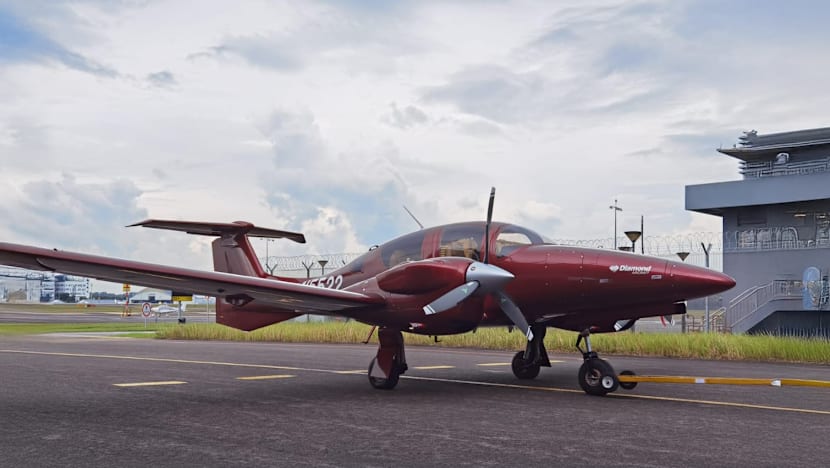
Situated on the grounds of Singapore’s historic Seletar Airport, The Seletar spans about two acres, housing a sprawling clubhouse, hangars for its planes as well as offices. (Photo: Toh Ee Ming)

This audio is generated by an AI tool.
Imagine slipping into a dual-controlled cockpit. Hands on the controls, with a professional pilot beside you, you nudge the aircraft into take off. The plane skims just beneath the clouds, tracing coastlines, hills and hidden islands.
This is the appeal of lifestyle aviation, a concept that sits apart from both commercial flights and private jets. Where airliners fly high and fast between major airports, propeller planes cruise lower and slower, often landing on short or even unpaved runways. Members share aircraft with friends or fellow travellers, embarking on curated excursions and multi-stop journeys to destinations across Southeast Asia that lie beyond the reach of conventional flights.
Such clubs are more common overseas — in the United States, Australia and Europe — but in Singapore, the idea is still new. Entrepreneur Lawrence Liaw is introducing this novel concept through The Seletar, the city-state’s first lifestyle aviation club. His model combines bespoke leisure travel, flight training and plane ownership under one aspirational umbrella — pitched squarely at high-net-worth individuals and corporate clients seeking exploration, adventure and community.
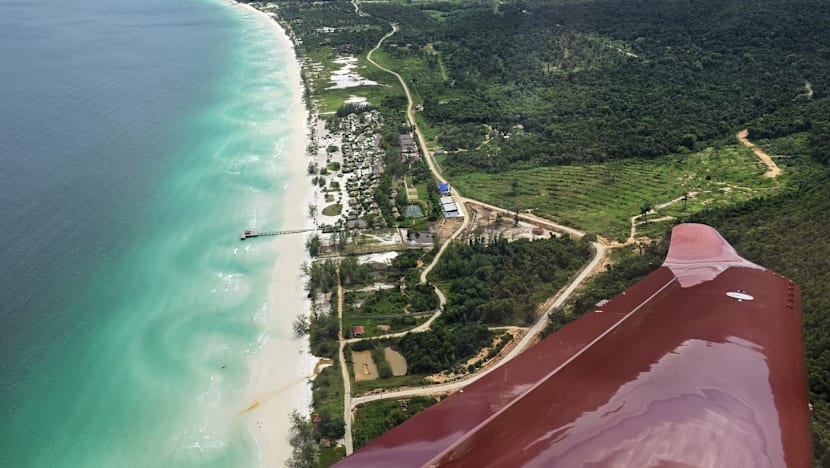
Situated on the grounds of Singapore’s historic Seletar Airport, the premises span about two acres, housing a sprawling clubhouse, hangars for its planes as well as offices. Seletar, Singapore’s oldest aerodrome still in operation, was completed in 1929 as the British Royal Air Force’s first base in the Far East. Now, the airport is primarily used by private jets and chartered flights.
Today, the Seletar clubhouse honours its heritage while embracing contemporary aviation culture. Black-and-white motifs nod to the airfield’s colonial past — a “piece of old England lost in time,” as Liaw described it — and lobby lighting echoes runway lights, accentuating the space’s soaring ceilings.
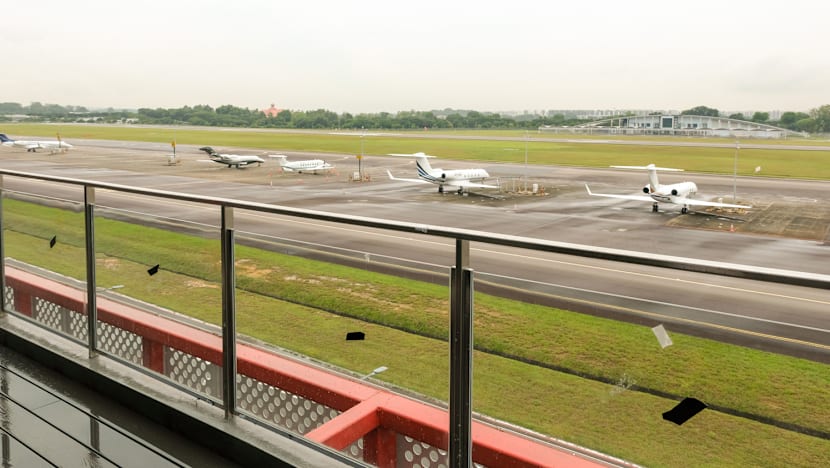
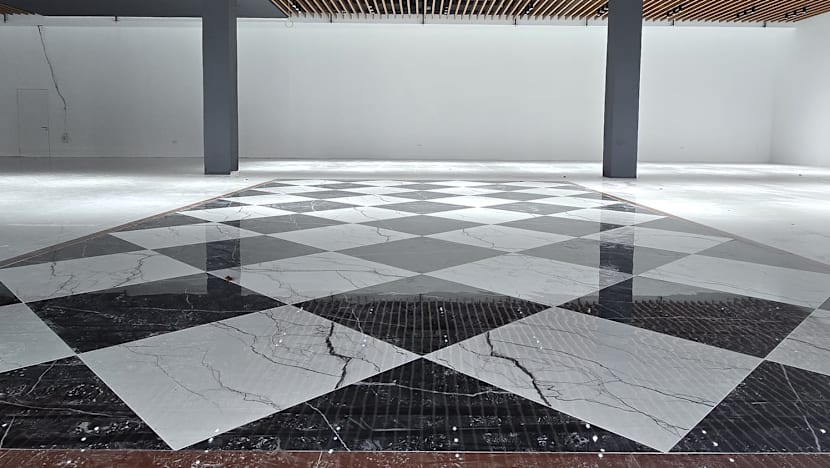
On the first floor will be a public cafe, envisioned with a distinctive concept and panoramic views of planes taxiing on the runway. The second floor, exclusive to members, houses co-working spaces and meeting rooms, a rock-climbing wall, a microbrewery, and areas for private dinners with guest chefs or private events — a social dimension rare in private aviation.
In late August 2025, the hangar became the venue for Lamborghini’s Singapore launch of its new Temerario supercar, with chairman and CEO Stephan Winkelmann in attendance.

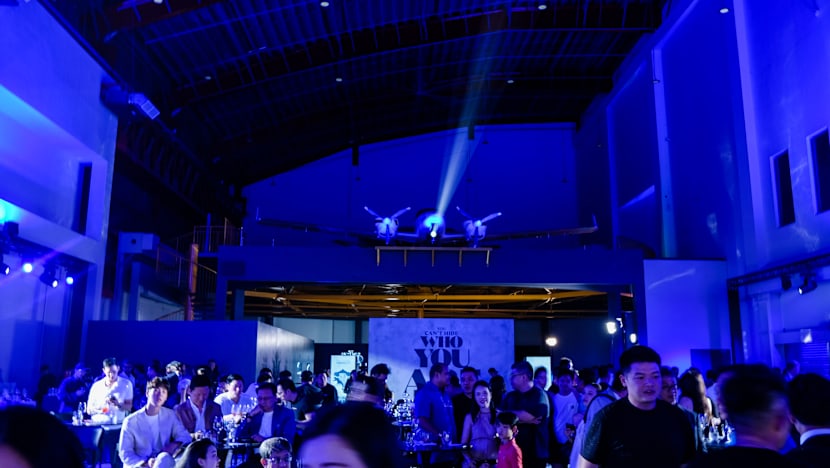
Liaw saw it as a chance to rekindle the romance of flying, while opening the door to a new generation for whom private aviation in Asia is not merely a status symbol, but a lifestyle pursuit.
FROM TECH TO TARMAC
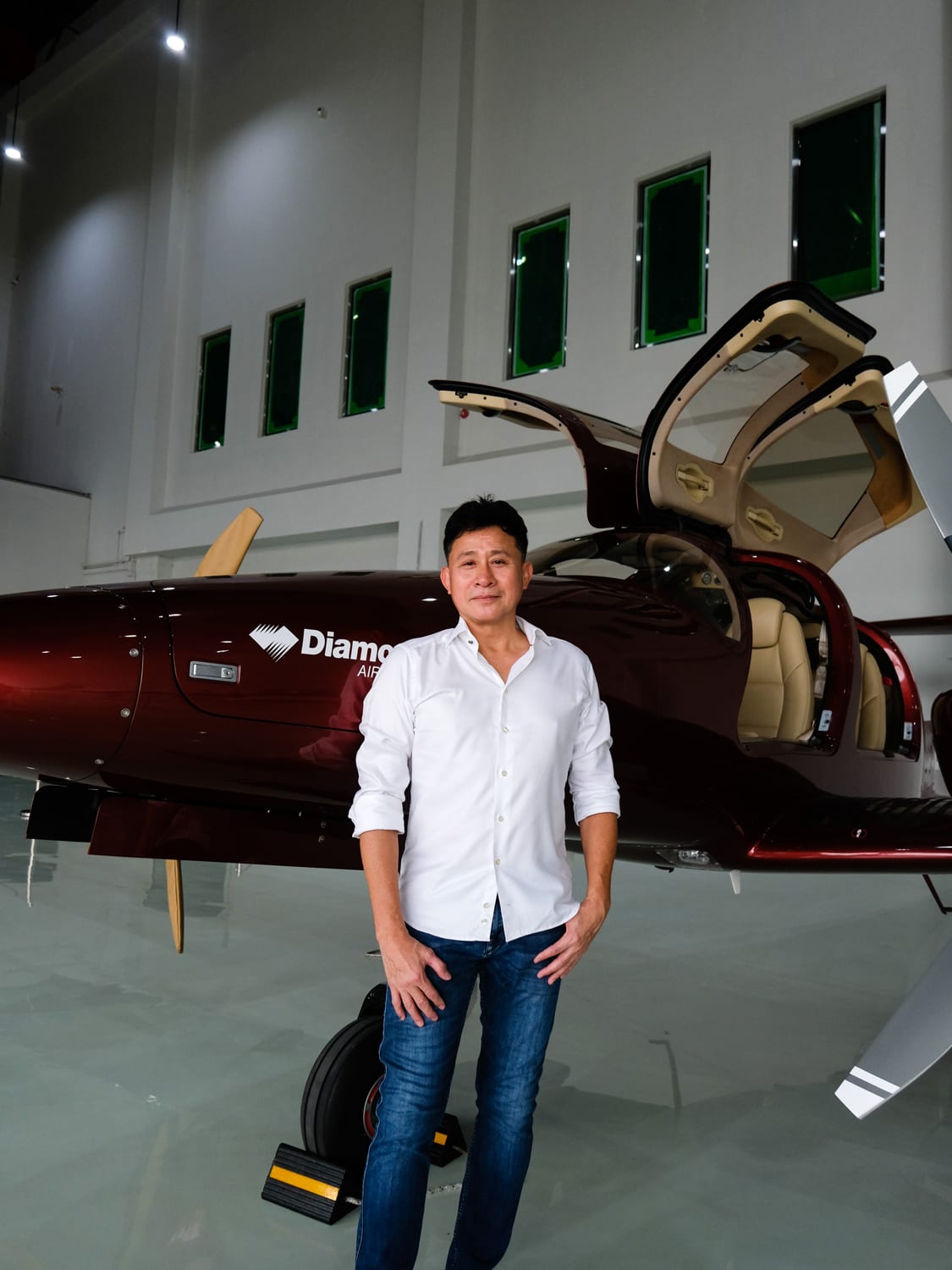
Liaw’s path to aviation was far from linear. The 60-year-old had dreamed of flying since childhood but had to put it aside due to imperfect eyesight. He went on to build a career in Singapore in IT and data storage solutions.
In semi-retirement, he began flight lessons at a local flight school. During the COVID-19 pandemic, an instructor mentioned two Seletar buildings that were available. He acquired the property and incorporated the company as Aviation Hub in April 2021, first imagining a flight school, but soon saw a larger opportunity: A community-focused aviation club.
Today, his fleet comprises a dozen aircraft, including several Austrian Diamond models — the largest being a seven-seater — often described as the “SUVs of the sky,” prized for their sleek design and glider-inspired efficiency. Aviation Hub is the authorised distributor and service centre for Diamond Aircraft, and the fleet has been equipped with advanced avionics, autopilot systems, and dual controls — enabling members to take the controls themselves under supervision.
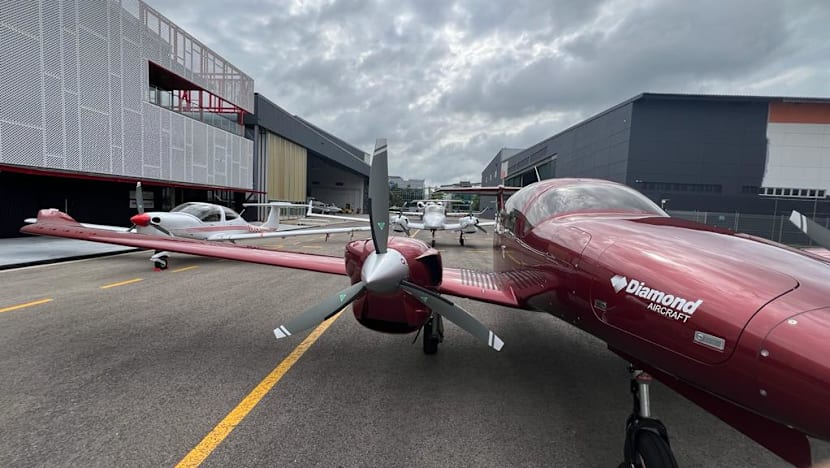
“Learning to fly gave me a sense of freedom that’s hard to describe,” he said. “The thrill of taking off or landing yourself, even under instruction, is something money alone cannot buy.”
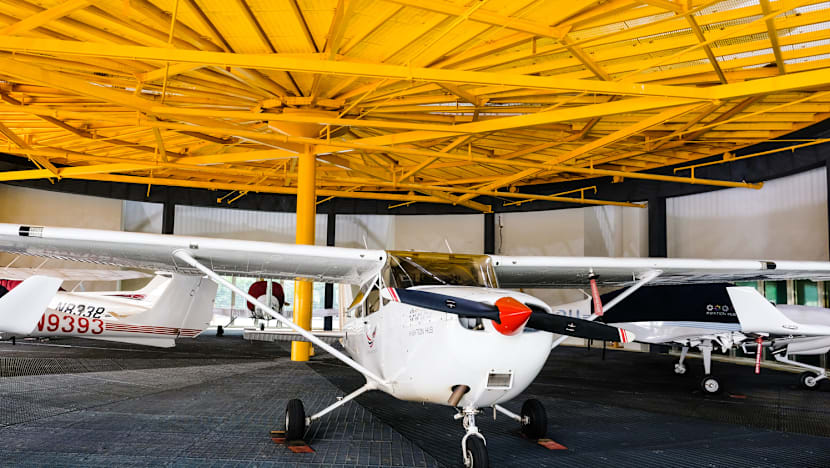
BESPOKE ADVENTURES ACROSS SOUTHEAST ASIA
While the club carries a premium — lifetime transferable membership starts at S$250,000 (US$193,500), with a S$1,000 monthly subscription that includes flight discounts — he frames it as more accessible than owning or chartering a private plane.
Bespoke excursions for small groups of 10 to 15 across three aircraft range cost about a five-figure amount per person, with all logistics handled by the club. From flight planning and airspace clearances to landing permissions and ground handling, members are spared the hidden fees and administrative complexities of conventional charters. With an owned fleet and experienced pilots at the helm, the club also relieves members the logistical headaches of coordinating trips across multiple privately owned aircraft.
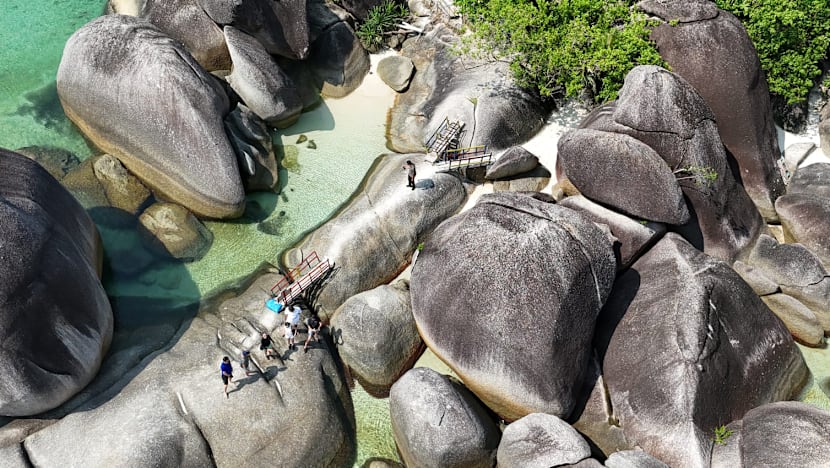
The club has already earmarked its first destination: Belitung, about a two-hour flight from Singapore. The island, designated a UNESCO Global Geopark, is known for its natural beauty, crystal-clear waters, and striking granite formations. Noting that many travellers are tired of more commercialised weekend getaways such as Phuket, Bali, Langkawi, or the Riau Islands, the team is exploring other remote locales across Southeast Asia, including Flores and Raja Ampat, enabling multi-stop excursions that “operate like a private yacht or limousine in the sky.”

TAKING THE CONTROLS: FLIGHT SCHOOL AND FLEET ACCESS
For members, the club offers more than curated excursions — it opens a path to aircraft ownership. Trips provide a hands-on experience, allowing members to get a feel for the planes before committing to a purchase. Maintenance fees are capped at 15 per cent of a plane’s value, with the club handling all upkeep. In effect, it operates like a serviced apartment: Members use their plane when they wish, while the club rents it to other members when idle, generating income for the owner.
Flight school tuition is also offered at reduced rates, lowering the barrier for those eager to learn to fly and fully participate in the lifestyle.
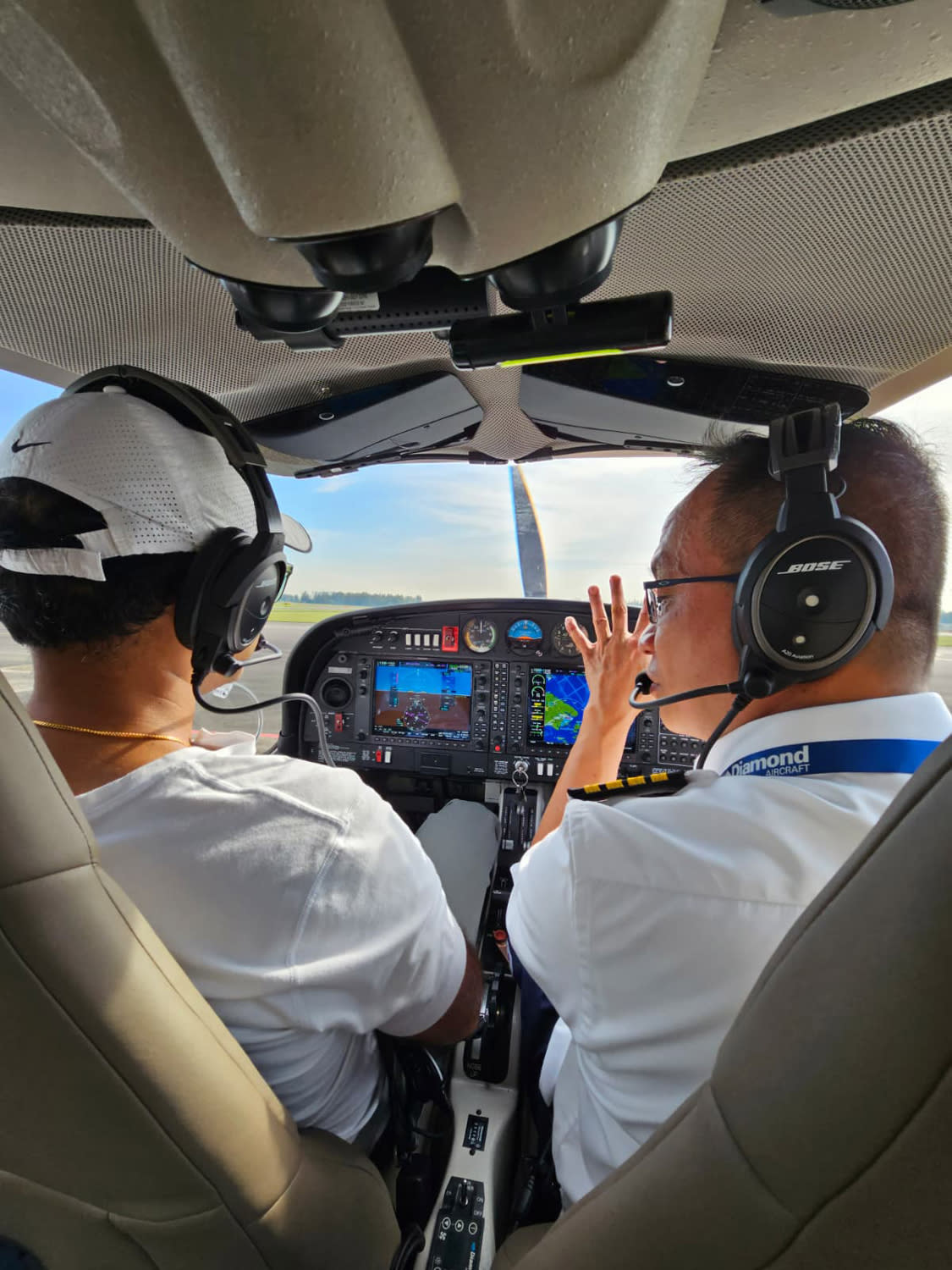
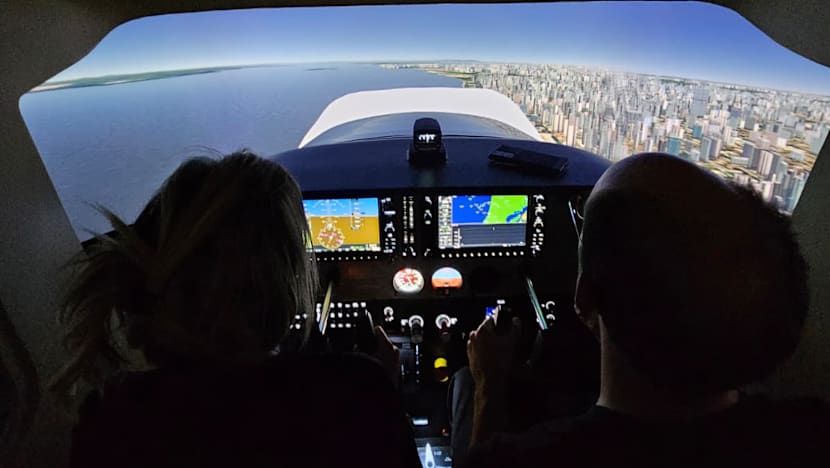
“When you start collecting luxury cars, yachts, flying becomes the ultimate adventure,” Liaw said. “It’s for those who want to go beyond the usual luxuries….I ask them, ‘Have you tried a plane?’”
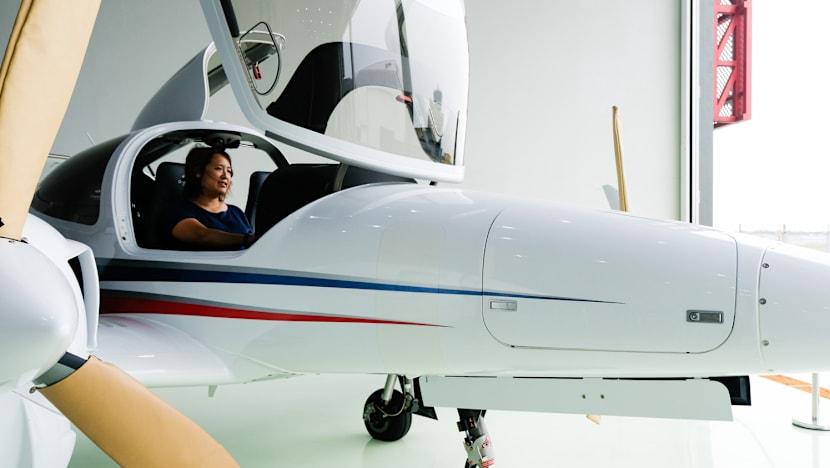
LOOKING AHEAD
Sourcing for membership is still in its early stages, with about a dozen members and outreach largely by word of mouth. Corporate memberships, priced at S$1 million, are also being offered, allowing firms to nominate up to five staff for access. Several private banks have already approached Aviation Hub about partnerships or are looking to introduce the club concept to their clients.
Construction delays during the pandemic have pushed back renovations, but the clubhouse is now on track to open by the end of 2025. Citing how Seletar has a rich history, Liaw said: “Seletar has been a forgotten corner of Singapore for too long, but with the right push, it can rival the charm of Joo Chiat.”
Beyond Singapore, there are plans to expand the club’s flight schools across Malaysia, Indonesia, and Cambodia, while negotiating with regional governments to enable multi-stop excursions. The club is also exploring bringing in larger aircraft capable of carrying more passengers in a business-class configuration, with potential applications beyond leisure. These aircraft could be used as regional air ambulances or luxury air shuttles connecting Southeast Asia to Singapore, a recognised high-quality medical hub.
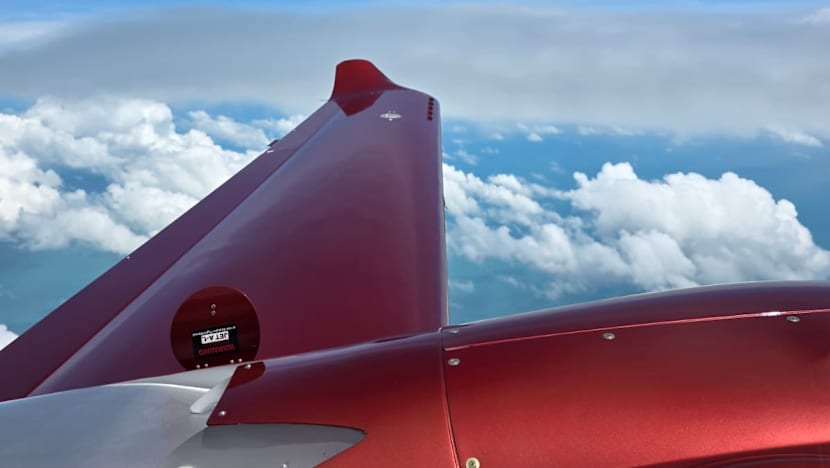
Liaw sees Aviation Hub and The Seletar as more than a business — it’s the fulfilment of a lifelong dream, one he has supported with substantial investment in the fleet and facilities. True to the pioneering spirit of the club, he said: “I’m close to retirement age, but I didn’t want to sit at home doing nothing. This allows me to share the joy of flying with others while building a community around it.”


















